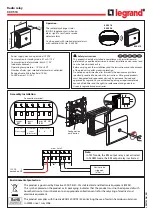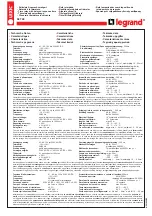
I. L. 41-904 A
INSTALLATION
•
OPERATION
•
MAINTENANCE
INSTRUCTIONS
TYPE HZ.HZ-4 OR HZM PLATE-KEYED
CARRIER RELAYING
INTRODUCTION
The
high-speed clearing of faults on trans
mission lines
is
recognized as necessary for
good
system operation.
The best overall pro
tection
is
provided
by
the method known as
differential
relaying
in which conditions at
the two
ends
of the llne are compared to de-
termine
whether
the
section
or
external
fault
is
in the line
to
the protected zone.
This
assures
simultaneous
tripping
of the
breakers,
which
is
desirable from the stand
points
of stability,
continuity
of service,
quick
reclosing, and miniffium damage to equip
ment.
For many lines, carrier relaying is t�e
r.JJst praC'tico.l and reliable medium for compaY'-
ing
the
conditions
at
two ends
of
line.
tJF
This system of protection uses relays opera
ting on current and voltage at each end ::,f
Uw
line
to detect and determine the direction
of
faults.
Carrier is started by fault detectors
when
a fault occurs.
Fault power flowing out
of
a line section indicates that the fault is
external
and
the
breakers
should
not
be
tripped.
At the same
instant, however, powPr
will be flowing into the other end of the line
as
though
the
fault
were
in
the section.
Under this
condition,
the directional relays
at
the
end where power is flowing out of the
section
will
operate
to continue the trans
mtssion of
a carrier signal which is received
at
both
ends and prevents the relays at both
ends
from
tripping
for all external faults.
For internal faults, power will not be flowing
cut
at either end and carrier will be stopped
by
operation
of
the directional elements at
both
ends
to permit simultaneous tripping of
both breakers.
The
carrier
scheme
utilizes
SUPERSEDES I. L. 41-904
*Denotes change from superseded issue.
the time-
distance characteristics of the type
HZ, HZ-4
:Jr
HZM
relay to provide hi,;h speed simultane
ous tripping with carrier in service, and step
type distance
protection
with carrier either
in
or
out
of service.
The first element of
the type
HZ, HZ-4
or
HZM
relay operated inde
pendently of carrier. The second element trips
at high speed for faults in the section because
the carrier tripping contacts short around the
synchronous
timer.
These
tripping contacts
close
immediately
if the fault is within the
se�tic,n, but are held open by carrier to block
tripping
if
the
fault is beyond the section
being protected.
This
arrangement thus pre-
vides
sim"",ltanec�us
tripping
over the entire
line
section.
The synchronous timer is
�sed
in
conr:ection
with
the second impedance ele
ment
tn
provide
back-up protection for
the
second
zone section.
The tripping circuit of
the
third
element
is independent of carrier
and operates with time delay for overall back-
up
pr0tection.
The
directional
element,
supervised
by
the
second impedance element,
together
with
the
third impedance element,
control
the
transmission
of
carrier.
Ad-
ditional interlocks can be included to prevent
tripping
of
any
of the elements
(
carrier or
back-up protection)
due to out-of-synchronism
surges.
Thus,
besides
the
carrier
pilot
protection,
this
system
inherently provides
high
speed and time delay back-up protection.
COMPONENTS OF
COMPLETE EQUIPMENT
An
outline
of
the
equipment used at each
terminal of
a
transmission line is as follows:
l.
A set
of
relays, operating 0n the cur
rent
and
voltage
of the line, to detect and
determine the direction of faults, to trip the
breaker
if the fault falls within the zone of
protection, and to control the transmission cf
carrier
for external faults.
One terminal of
EFFECTIVE AUGUST 19 55
www
. ElectricalPartManuals
. com


























